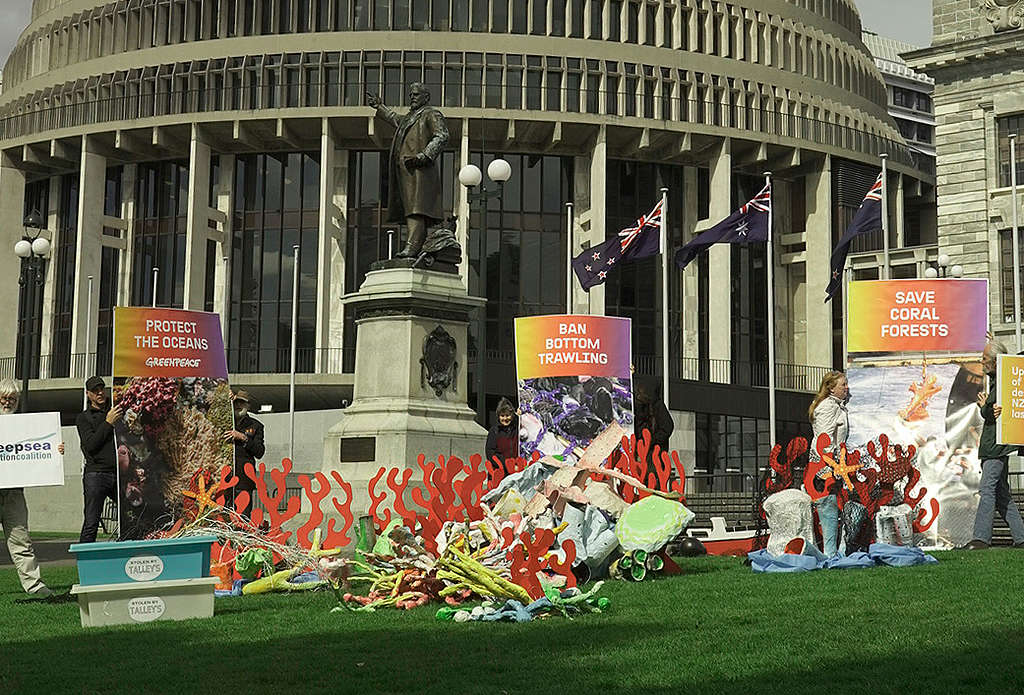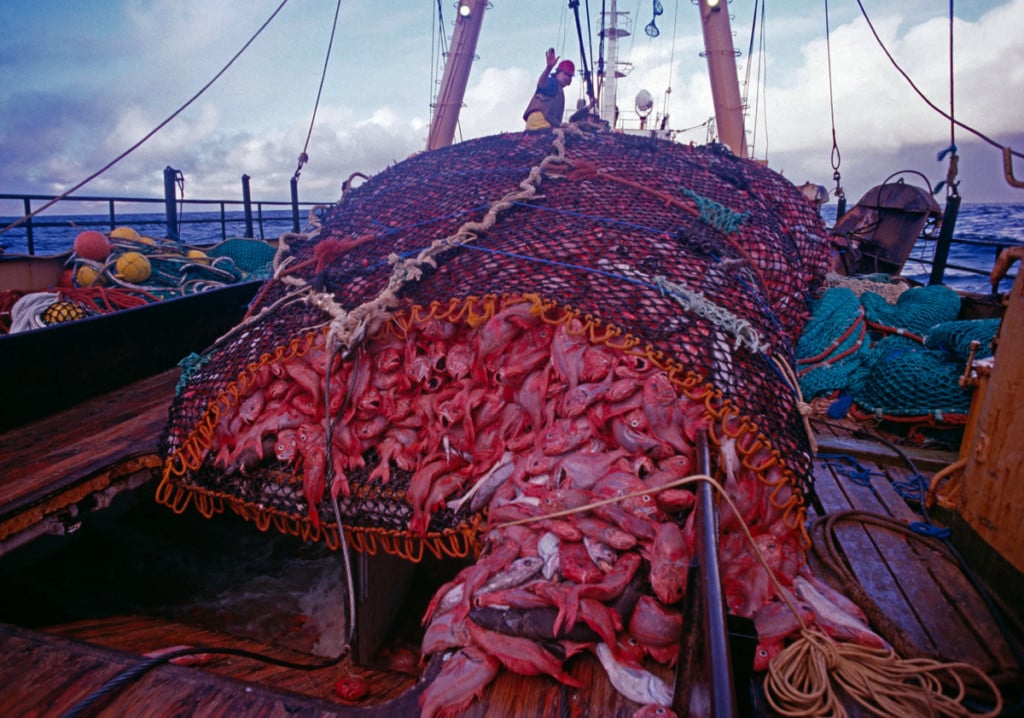Greenpeace protesters have covered Parliament lawn with replica coral this morning, calling on the Government to take urgent action on bottom trawling.

Oceans campaigner Jessica Desmond says the activity coincides with new figures that reveal up to 3,000 tonnes of coral was destroyed by New Zealand bottom trawl vessels last year.
“The scale of the destruction caused by bottom trawling is immense. But when corals are pulled up in fishing nets, that’s actually only a tiny fraction of the destruction happening on the seafloor. For every tonne of coral brought up in the net, up to 340 tonnes are destroyed below,” she says.
“The New Zealand bottom trawling fleet is bulldozing our oceans – both in New Zealand waters and internationally. This concerns everyone because healthy oceans are necessary for all life on this Earth. The fishing industry is turning precious habitats into rubble, and they’re getting away with it because it’s out of sight.”
Greenpeace dumped coral from fish bins marked ‘Stolen by Talley’s’ onto Parliament lawn on Tuesday, as they called on Minister of Fisheries Stuart Nash to act to protect these ecosystems.
New Zealand owned Talley’s and Sealord bottom trawl in both domestic and international waters.
Desmond says the Government is refusing to listen to the tens of thousands of New Zealanders who want better protection for our troubled oceans.
“More than 40,000 New Zealanders have called for the Government to ban bottom trawling on seamounts, where these ancient corals grow. But so far, the only action the Government has taken is to increase the amount of bottom trawling allowed in the coming fishing season,” she says.
“When are they going to listen to the science and to the thousands of Kiwis who want better for our seas?”
Alongside the Deep Sea Conservation Coalition, and several other eNGOs, Greenpeace is calling for a ban on bottom trawling of seamounts.
ENDS
Where the “3,000” number came from:
New research published in 2019, gave us the ratio of how much devastation there is on the seafloor, based on what comes up in a net.
Pitcher, Williams and Georgeson (2019) Progress with investigating uncertainty in the habitat suitability model predictions and VME indicator taxa thresholds underpinning CMM 03-2019, Pg. 14.
On Pg 14 of the paper:
“These estimates indicate that rather small catches of sessile benthos in fish trawls scale to large contacts on the seabed, particularly for fragile corals and bryozoans. Based on the assumptions in Appendix 1, a trawl catch of 250 kg of corals could scale to a seabed contact of more than 33–104 t of corals on the seabed. Given the estimated impact proportion of 0.82 (Mormede et al.2017), this contact range may translate to seabed impacts of more than 27–85 t.”
From this, we have the ratio 1 tonne in the net equals 132 – 416 tonnes “contacted” on the seabed.
Then apply an impact proportion of 0.82 (essentially this means that of the corals that come into contact with the trawl net, 82% are destroyed and 18% survive).
So we know the amount destroyed amount of coral on the seafloor is 108 – 340 tonnes per tonne in the net.
Then we looked at how much coral the NZ bottom trawling fleet trawled up last season.
There was an estimated 6.4 tonnes of corals in the fleets nets, from NZ waters last year.
Source: Weaver, S (2019) Conservation Services Programme Annual Research Summary 2017-18 and calculations to extrapolate from average 25% observer coverage to total impact across the fishery.
Extrapolation from the observed figure to the whole fishery across NZ waters was done by taking account of 25% coverage and area-based scaling (reporting varies in different areas so the estimate uses information based on Fisheries Management Area, catches and observer coverage).
Then we added 2.4 tonnes of coral and other vulnerable species recorded from the deepwater fleet (which have 100% observer coverage).
Source: Geange, Cryer & Bock (2019) Summary of recent benthic bycatch data – New Zealand
This means 8.8 tonnes of coral and other vulnerable species were trawled up the NZ bottom trawling fleets nets last year.
Multiplied by the impact ratio, we arrive at 915.2 to 2,992 tonnes of coral destroyed on the seafloor by the New Zealand bottom trawling fleet, just last year.

At home and far out to sea, our oceans are being plundered for profit by the fishing industry through bottom trawling. But what is bottom trawling and why is it so destructive to ocean habitats?
